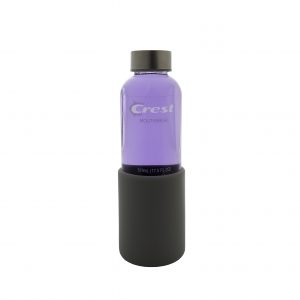Packaging reimagined
In case you haven’t heard, Loop is a new system of shopping designed to eliminate packaging waste and mend our disposable ways. With the new system, consumers will be able buy products ranging from ice cream to laundry detergent in reusable containers, which they can return and refill.
Created by New Jersey-based TerraCycle, there was much ado when Loop was unveiled in late January and it was touted as a first-of-its-kind platform with big consumer goods companies (P&G, Nestlé, Unilever and many others) on board. Loop is being tested by retailers such as Carrefour in France and Tesco in the United Kingdom. TerraCycle CEO Tom Szaky, who grew up in Toronto, says a Canadian retail partner will be named in the coming months and the platform should arrive in Canada later this year.
Canadian Grocer recently spoke to Szaky about the innovative project. Here are edited excerpts from that interview:
Why the need for Loop?
For 16 years, TerraCycle has been focused on recycling hard-to-recycle materials, from diapers to cigarette butts, and integrating unique materials back into packaging, like ocean plastics back into shampoo bottles. While this is critically important, it’s not going to foundationally solve the problem of waste. If you have a headache you’ll take a Tylenol. But it’s not foundationally solving the root cause of your headache. We believe the root cause of waste is using something once then disposing of it. The reason Loop is needed is that we’re in a massive waste crisis globally, from ocean plastic to micro-plastic in our drinking water.
Are consumers not recycling enough?
Not at the rates they need to be. If you think about the Canadian context, I think just one in every four soda bottles are recycled. And those are things that are highly recyclable. There is a huge, huge amount of stuff that is not recyclable.
What gave you the inspiration for Loop?
The root cause of waste is disposability. How do we solve the unintended consequences of disposability while matching or beating the benefits that it brings in terms of convenience and affordability? What’s sort of weird, when we buy disposable goods, is we really want the content but we also end up owning the package. Consumers don’t really want to own the package, so why should they? By shifting ownership from the consumer owning the package to the manufacturer, it’s really amazing. It moves the packaging from being a cost to an asset.

How does it work?
Brands, from startups like Greenhouse Juice in Canada to P&G and Unilever, join Loop to enable a durable
Will the cost be the same for consumers?
There are two types of products in Loop. There is the stuff in the container model and there is what we call disposable-durables. The stuff in the container is like orange juice, ice cream, laundry detergent. The price of the content will be about the same as what you normally pay. The only difference is you temporarily have a deposit on that durable package equal to the value of the durable package, which can be anywhere from 25 cents to $10, which you get back when you return it. What’s neat is the disposable-durables, which are effectively everything else—baby toys, clothing, the handle of a razor blade. You’ll see garments in Loop about a year after launch. Let’s say it’s a $10 T-shirt for a baby. You would pay a $5 cost and a $5 deposit, which means if you choose not to return it, you’ve paid the same 10 bucks. But if you return it, you’ve only paid half. You can effectively save 50% on those items, a massive savings, and what’s really cool is the manufacturers of those products are not motivated to make it as cheap as possible but inversely to make it as long-lasting and durable as possible.
Why should grocers be part of Loop?
It can help them bring their consumers unparalleled sustainability. The idea of the package-free aisle, a lot of grocers are being asked to bring that type of service. Loop allows them to do it in a way that’s profitable, bringing major brands into the process. Consumers now get a better packaging experience that potentially is way more functional. Take ice cream: in Loop, Häagen-Dazs is moving from coated paper to double-wall stainless steel, which keeps your ice cream frozen for multiple hours on the go and is more beautiful.
This article appeared in Canadian Grocer’s March/April 2019 issue.

